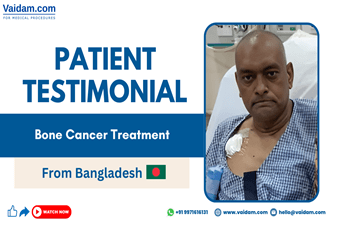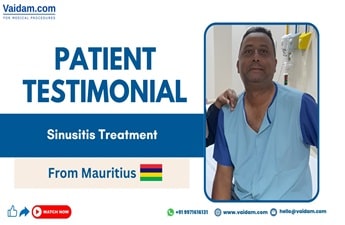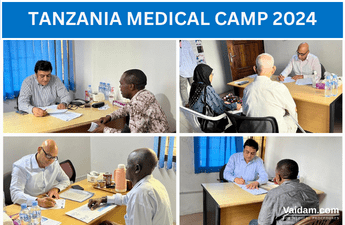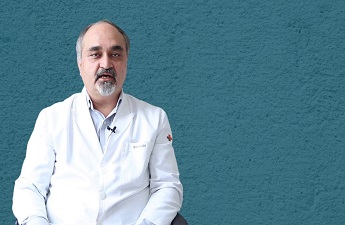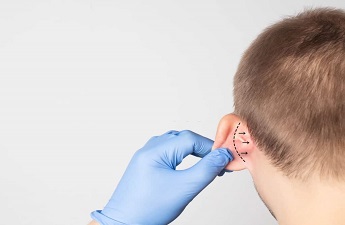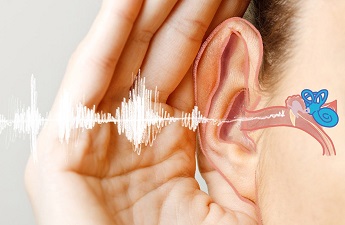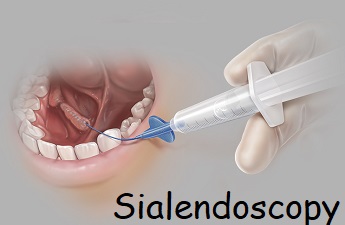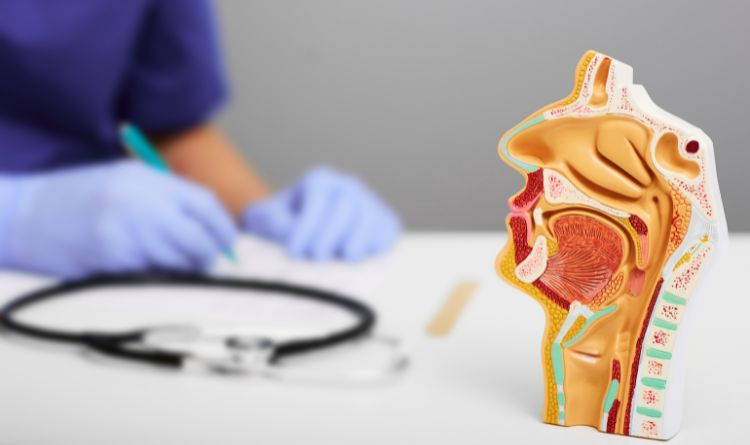
Each year, millions of ENT surgeries are performed worldwide. These surgeries, ranging from simply treating acute infections to major interventions like removing head & neck tumors, can be performed either on an outpatient basis or with hospital admissions.
A critical preparatory phase is essential when it comes to ENT or ear, nose, and throat surgeries. Before any ENT surgery, a series of pivotal tests come into play. These tests are a step towards guaranteeing the success of the surgical procedure.
The reason for these tests lies primarily in two domains: firstly, they enable physicians to learn about the health concerns that could complicate the surgical process. Secondly, they help tailor the surgery to meet each patient's individual needs.
So, let's get ready and learn in-depth about some of the standard and basic preoperative tests for ENT surgeries.
Get in Touch with Medical Experts
What are the Various Types of ENT Surgeries?
ENT surgeries encompass a broad spectrum of procedures, from primary interventions like correcting a deviated septum to complex surgeries such as removing head and neck tumors. Some of the common surgeries performed to treat ENT conditions are mentioned below.
Surgeries of Ear:
- Tympanoplasty
- Mastoidectomy
- Cochlear Implantation
- Myringoplasty
- Ossiculoplasty
Surgeries of Nose:
- Rhinoplasty
- Septoplasty
- Turbinate Reduction
- Rhinoseptoplasty
- Endoscopic Sinus Surgery
- Balloon Sinuplasty
Surgeries of Throat:
- Tonsillectomy
- Adenoidectomy
- Laryngoscopy
- Thyroidectomy
- Parotidectomy
- Vocal Cord Surgery
Irrespective of the specific surgical undertaking, a common prerequisite is the need for preoperative assessments to ascertain the patient's health status and readiness for the operation.
Who Performs ENT Surgeries?
Otorhinolaryngology is the branch of medicine that cares for ear, nose, and throat diseases. ENT surgeons or head & neck surgeons are specialized medical professionals who manage these disorders using various surgical techniques.
ENT surgeons in India have been at the forefront of using the latest medical advancements like minimally invasive and robotic surgeries. They provide cost-effective treatment plans at quality matched with international standards.
ENT surgeons in countries like Turkey, UAE, and Germany are not behind. Most have been trained internationally at prestigious medical institutions and use a patient-centric approach to manage ear, nose, and throat disorders.
What are the Basic Preoperative Tests for ENT Surgeries?
Various tests and imaging techniques are done before the ENT surgeries. Each test plays a distinct role, from blood analyses designed to unravel conditions like anemia or clotting disorders to advanced imaging techniques delivering clear views of the body's internal landscape. These tests represent a tailored pathway towards safe and effective surgery, unique to each patient.
Some of the basic preoperative tests for ear, nose, and throat surgeries are:
PNS CT Scan

A Paranasal Sinus Computed Tomography Scan is a radiological imaging procedure that focuses on capturing detailed images of the paranasal sinuses. The primary purpose of a PNS CT scan is to provide a clear view of the anatomy and any potential abnormalities in these sinus cavities. It offers valuable information for both diagnosis and treatment planning. The scan contributes to the success and safety of ENT surgeries.
A PNS CT scan is essential before ENT surgery for the following reasons:
- One of the major reasons for conducting a PNS CT scan is to diagnose and assess various conditions that affect the paranasal sinuses. These conditions include sinusitis, sinus polyps, sinus tumors, or structural abnormalities like a deviated nasal septum.
- ENT surgeons rely on PNS CT scans to visualize any sinus abnormality's specific location, size, and extent. This detailed information aids in surgical planning, allowing the surgeon to target and address the affected areas during the procedure precisely. It ensures the surgery gets tailored to the patient's unique anatomical characteristics.
- Assessing potential risks and complications is essential before any surgery, including ENT procedures. PNS CT scans can reveal necessary information about the proximity of critical structures, such as the eyes or brain, to the affected sinuses. This knowledge helps the surgeon minimize the risk of injury during surgery.
- In some cases, the results of a PNS CT scan may influence the treatment choice. They help decide whether surgery is needed or the disease will get managed through nonsurgical treatments.
- In cases where surgery has been performed, conducting follow-up PNS CT scans is vital to assess the surgical outcome. These scans aim to confirm that the affected areas have been successfully addressed and monitor for any signs of recurrence or complications.
How is a PNS CT Scan Done?
The procedure is quick, safe, and essential for diagnosing and managing paranasal sinus conditions. It involves the following steps:
- The patient is positioned on an examination table, typically lying on their back.
- A contrast dye may be injected into the patient's vein to enhance imaging.
- The patient moves through a CT scanner, which uses X-ray beams to create cross-sectional images of the paranasal sinuses.
- The patient must briefly hold their breath during the scan for clear images.
- A technologist monitors the procedure from a separate room, providing instructions through an intercom.
- After obtaining all the images, the patient is removed from the scanner.
- You can resume normal day-to-day activities after the scan. If used, contrast gets gradually eliminated from the body.
PNS X-Ray
X-ray imaging of the paranasal sinuses (PNS X-ray) is occasionally conducted as a diagnostic modality before ENT (ear, nose, and throat) surgery. Despite the preference for more advanced imaging techniques, such as computed tomography (CT) scans, there are instances where the surgeon might recommend PNS X-rays.
Why is a PNS X-ray Done Before ENT Surgery?
Some of the reasons for considering a PNS X-ray before ENT surgery are:
- X-rays can provide basic information about sinus anatomy and some conditions.
- X-rays are a straightforward and cost-effective way to evaluate the general condition of the paranasal sinuses. They may be sufficient for routine cases where detailed imaging is not necessary.
- In cases where minimizing radiation exposure is a concern, such as for pregnant patients, choosing X-rays over CT scans is the right choice. X-rays typically deliver lower radiation doses.
- X-ray images can establish a baseline evaluation of sinus conditions, which can be particularly valuable for monitoring changes over time.
- In healthcare facilities with limited access to CT scanners, X-ray facilities may be more accessible and practical.
It is essential to recognize that PNS X-ray imaging has few limitations in providing detailed anatomy compared to CT scans.
The healthcare provider is the one to decide to perform a PNS X-ray before ENT surgery. The individual patient's needs and the diagnostic requirements of the surgical procedure influence the decision.
MRI Scan
- An MRI scan is a noninvasive imaging technique that uses strong magnetic waves to click detailed images of the organs, bones, soft tissues, and veins.
- Unlike X-rays and CT scans, MRI does not use radiation to capture images of the internal body structures.
- Being a comparatively expensive test, MRIs might not be routinely performed. However, it can detect certain conditions that X-rays, CTs, or ultrasounds might miss.
- An MRI can detect conditions like aneurysms, tumors, inner ear damage, bone abnormalities, cochlear implant problems, labyrinthitis ossificans, sensory hearing loss, etc.
What are the Benefits of an MRI Before ENT Surgeries?
- The imaging tests help understand the prognosis of vestibular schwannomas and decide the best surgical approach.
- An MRI before cochlear implants help to understand the anatomic and pathological condition that might be relevant to the surgery.
- It can rule out residual and recurrent cholesteatomas, which could necessitate its removal before, during, or after the surgery.
- It also helps detect cochlear nerve aplasia, a condition with a contraindication for cochlear implantation.
Tympanometry
- Tympanometry is a type of ear test that assesses the functioning of the middle ear.
- The test involves using specialized medical equipment, a tympanometer. The audiologist will insert the probe part into the ear, sending air and low-tone sound waves into the ear canal.
- The microphone attached to the probe records the movement of the eardrum. The movement then gets displayed on a graph known as a tympanogram.
- The surgeon will then check the results to find abnormalities like a blockage in the middle ear, growth in the middle ear, and a hole in the eardrum.
Why is Tympanometry Necessary before ENT Surgery?
- The test helps in detecting infections of the ear (otitis media). Managing such infections before surgery is necessary to avoid post-surgical complications.
- The presence of earwax hampers the functioning of hearing aids. If earwax is blocking the eardrum, a tympanometry test will verify it.
- It also helps in identifying the presence of fluid in the middle ear. Clearing this fluid makes the chances higher for successful surgeries.
Audiometry Test
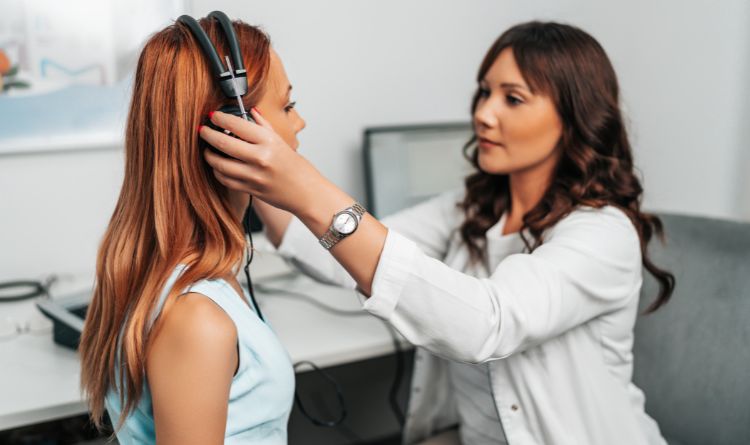
Audiometry is a diagnostic test used to assess a person's hearing ability. This test is a series of assessments designed to examine the sensitivity of a person's hearing, their ability to perceive different sound frequencies, and their overall auditory function.
How is an Audiometry Test Performed?
The following steps outline the audiometry test process:
- The test is conducted in a soundproof or quiet room to eliminate external noise interference. The patient is seated comfortably and provided with headphones or earphones.
- A trained audiologist explains the test procedure to the patient. They give clear instructions on how to respond to different auditory stimuli.
- Pure Tone Audiometry: The test involves listening to pure tones (sinusoidal sound waves) at varying frequencies and intensity levels. These tones are delivered through the headphones or earphones, one ear at a time. The patient must do manual gestures, such as raising a hand or pressing a response button to acknowledge the sounds.
- Threshold Determination: The primary objective is to know about the patient's hearing thresholds (the quietest sounds you can hear at various frequencies).
- Speech Audiometry: You may need to repeat words or sentences at various volumes to assess your ability to understand speech.
- Bone Conduction Testing: This involves the placement of a bone vibrator device behind the ear to assess hearing through bone conduction pathways.
- If you have hearing loss in one ear, masking noise ensures that the test measures the hearing of the ear being tested, not the better ear.
- The audiologist will interpret the results and provide you with an audiogram, a graph showing your hearing thresholds at different frequencies. They will explain the results and discuss necessary next steps, such as treatment or further evaluation.
What are the Benefits of Audiometry Tests?
Here's why audiometry tests are performed before ENT (ear, nose, and throat) surgeries:
- Audiometry establishes a standard baseline of a patient's hearing abilities before surgery. This baseline is then used for comparison after surgery to assess any changes in hearing.
- Audiometry helps evaluate the risk of hearing loss during or after surgery. It allows the surgical team to take necessary precautionary measures to minimize the risk of hearing loss.
- Audiometry is crucial for detecting any preexisting hearing impairments or conditions. It helps in diagnosing sensorineural hearing loss, conductive hearing loss, or mixed hearing loss that may be present. Knowledge of these conditions is crucial in shaping surgical strategies and setting postoperative expectations.
- The results of the audiometry tests help the ENT surgeon determine the best surgical approach. In chronic ear infections or cholesteatoma cases, knowledge of hearing levels can influence decisions about whether to perform hearing-preserving surgery or more extensive procedures.
- Audiometry helps guide the selection of the most appropriate treatment option.
- Audiometry results help patients understand the potential impact of the surgery on their hearing. It enables them to set realistic expectations for postoperative hearing outcomes.
- After surgery, audiometry is done for postoperative follow-up to assess the procedure's success. It also helps in monitoring any changes in hearing.
Audiometry tests are an integral part of the preoperative assessment before ENT surgeries. They provide critical information about a patient's hearing status, guide surgical decisions, and help manage expectations for postoperative hearing outcomes. These tests contribute to the overall safety and success of ENT procedures.
Laryngoscopy
- It is a minimally invasive procedure that can be performed both on an outpatient basis and in a surgical room with hospital admission.
- The procedure involves a flexible, thin tube with a camera attached, just like an endoscopy. It lets the surgeon view the complete larynx, including the vocal cords.
- When done on an outpatient basis, a numbing medicine and decongestant are given before the laryngoscopy. The flexible laryngoscope is inserted via the nose to examine the voice box.
- If you are undergoing laryngoscopy in an operating theater, the laryngoscope is inserted via mouth. There won't be any discomfort as you will receive it under general anesthesia.
- Laryngoscopies help surgeons detect any underlying diseases requiring special attention during surgeries.
- Biopsies might also be performed simultaneously to check the tissues for cancerous growth.
Ultrasound
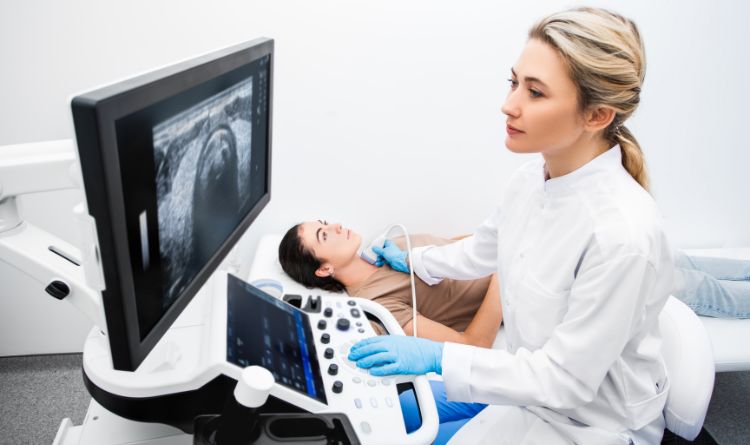
Ultrasound is a non-invasive imaging technique that utilizes high-frequency sound waves (ultrasound waves) to produce detailed images of the anatomical structures within the neck region.
The procedure involves the following steps:
- A transducer releases ultrasound waves that travel through the neck's soft tissues. These waves encounter different types of tissues with varying densities.
- When the ultrasound waves encounter tissue, such as the muscle, thyroid gland, and nodules, some sound waves are reflected to the transducer. In contrast, others continue to penetrate deeper into the body.
- The reflected sound waves are detected by the transducer and processed by a computer. The computer analyzes the time it takes for the echoes to return and their strength (amplitude).
- By interpreting the echo data, the computer generates real-time images or sonograms that visually represent the structures within the neck.
Ultrasound is necessary before throat surgeries as it serves the following functions:
- The ultrasound is primarily used to assess the thyroid gland. It helps determine the thyroid's size, shape, and internal anatomy. It also checks the presence and characteristics of any thyroid nodules. This information is crucial for diagnosing thyroid nodules, goiter, or thyroid cancer.
- Additionally, ultrasound can identify and assess nearby lymph nodes. Enlarged or abnormal lymph nodes can indicate underlying issues, such as infection or malignancy, which may influence surgical planning.
- The detailed information obtained from the ultrasound assists the surgical team in planning the surgical approach. They can decide the extent of thyroidectomy needed and identify any unexpected findings in anatomy that may affect the procedure's success.
CBC and Thyroid Function Test
CBC is a comprehensive blood test that is done before any surgery. In cases of throat surgery, a CBC helps in the following ways:
- A CBC includes the assessment of the RBC count. Low RBC count can contribute to anemia, impacting oxygen transport. Surgical stress and blood loss during throat surgery can exacerbate anemia, making it essential to identify and address it beforehand.
- White blood cells are vital immune system components, defending against infections. Elevated WBC count may indicate an underlying infection or inflammatory process. Surgery increases the risk of infection, so identifying and treating such conditions before the procedure is vital.
- Platelets are essential for blood clotting. A low platelet count (thrombocytopenia) may indicate a bleeding tendency. Assessing platelet levels helps the surgical team take precautions to prevent excessive bleeding during the procedure.
TFT, or thyroid function test, is done to check the levels of T3, T4, and thyroid-stimulating hormones in the body. Thyroid function tests are crucial before a thyroidectomy (thyroid gland removal) because they help us:
- These tests tell us if your thyroid gland is working correctly. Is it overactive (hyperthyroidism), underactive (hypothyroidism), or normal?
- The surgeon can decide how much of the thyroid gland to remove based on thyroid function. For example, in hyperthyroidism, they might need to remove most of it to fix the problem.
- Your thyroid affects how your body reacts to anesthesia. Knowing your thyroid status helps the anesthesiologist use the right amount of anesthesia for your safety.
- By addressing thyroid issues before surgery, surgeons can lower the chances of complications. For instance, it is crucial to prevent a severe condition called thyroid storm, which can be life-threatening in hyperthyroidism.
Conclusion
For an ear, nose, and throat (ENT) surgery, the journey begins long before the operating room lights are switched on. It commences with a series of precise and purposeful preoperative tests that serve as the foundation for successful surgical outcomes.
Preoperative tests help to uncover hidden health concerns, mitigating potential complications. At the same time, they empower surgeons with insights that help build a surgical plan optimized for individual needs. When carefully selected and interpreted, these tests become the guardians of surgical safety and help provide patient-centered care.


